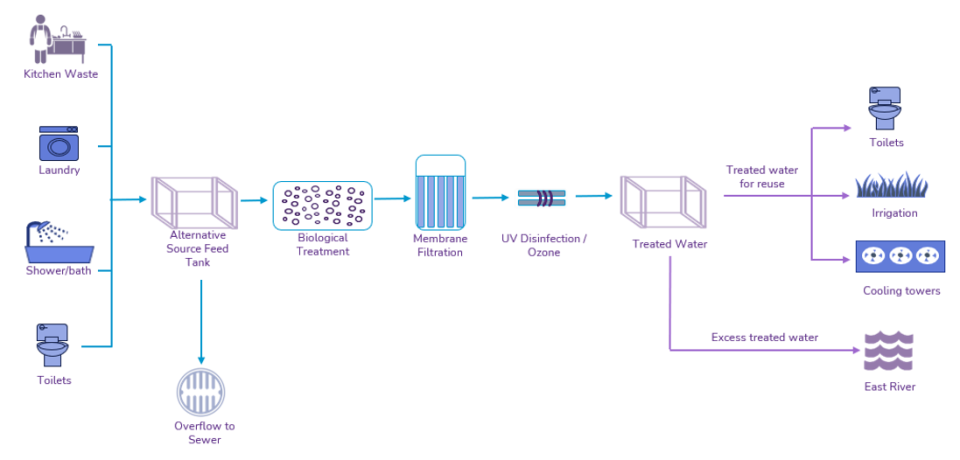Water Reuse Case Study: Brooklyn, NY
The EPA and partners have created a series of case studies that highlight the different water reuse approaches communities have taken to meet their water quality and water quantity needs. Each case study contains information about the technical, financial, institutional, and policy aspects of these water reuse systems and the communities in which they are located.
On this page:
- Overview
- Context
- Solution
- Benefits
- Policy, Institutional, and Regulatory Environment
- Financial and Contractual Agreements
- Lessons Learned and Conclusions
- Background Documents
Overview
Due to rapid population growth in New York City (NYC), demand for potable water is growing. In addition, population growth can generate more wastewater, straining NYC’s existing wastewater treatment infrastructure’s capacity. NYC also has a combined sewer system, a system that transports stormwater and sewage in the same pipes, and is often overwhelmed by rainfall, causing combined sewer overflows (CSOs) in various parts of the city.
To address these problems, a new redevelopment project which is under construction in Brooklyn, NYC, NY has incorporated reuse into its design. Specifically, this reuse project is part of the revitalization of the historic Domino Factory, and consists of a non-potable water reuse system which will collect and treat wastewater from five newly constructed buildings and reuse it for toilet flushing, cooling tower make-up and irrigation in three of those same buildings. The treatment system is able to process 400,000 gallons per day (gpd) (approximately 1,500,000 liters per day) of wastewater. Half of the treated wastewater will be reused onsite and the remainder will be discharged directly to the East River after treatment. Non-potable reuse will significantly reduce the demand on the water supply in the rapidly developing neighborhood by offsetting the use of potable water. Onsite treatment and reuse also mitigates the impacts of CSOs by diverting wastewater away from combined sewers and lowering pressure on downstream wastewater treatment facilities. Through an innovative private-public partnership, the project additionally integrates green infrastructure and public park space which lowers stormwater flows to the combined sewer system and enhances public access to the waterfront.

